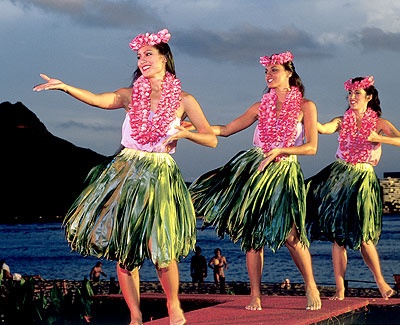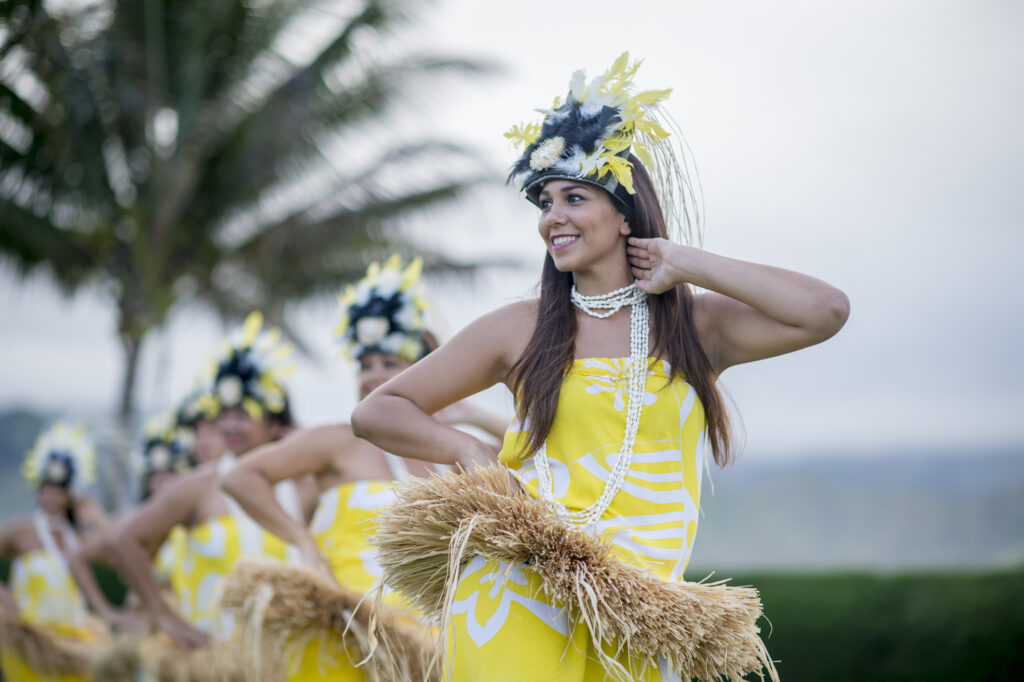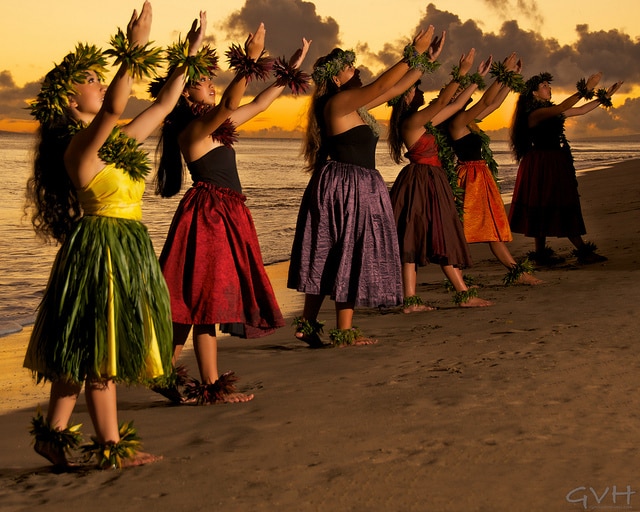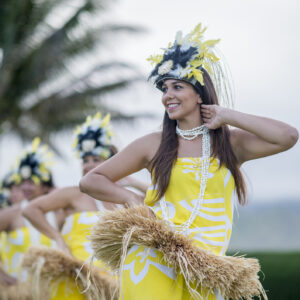If you’re looking to immerse yourself in the vibrant culture of Hawaii and experience the enchanting rhythms and movements of traditional Hawaiian dance and music, you’re in for a treat. Hawaii offers a plethora of opportunities for you to engage with this rich heritage, whether you’re a seasoned enthusiast or a curious beginner. From attending awe-inspiring performances at authentic luaus to taking part in lively hula workshops, there are countless avenues for you to embrace the spirit of this captivating art form and create lasting memories along the way. So, pack your aloha spirit and get ready to embark on an unforgettable journey through the mesmerizing world of traditional Hawaiian dance and music.
1. Attend a Traditional Hawaiian Luau
1.1 What is a Luau?
A luau is a traditional Hawaiian feast that showcases the culture, food, and entertainment of the Hawaiian people. It is a celebration that brings together family, friends, and tourists to experience the true essence of Hawaii. Typically held outdoors, a luau features a variety of delicious food, vibrant dance and music performances, and cultural activities. Attending a luau is a fantastic way to immerse yourself in the rich traditions and heritage of Hawaii.
1.2 Traditional Hawaiian Dance and Music Performances
At a traditional Hawaiian luau, you will have the opportunity to witness captivating dance and music performances that showcase the beauty and grace of the Hawaiian culture. Hula, the most iconic form of Hawaiian dance, is often performed, accompanied by live music played on traditional Hawaiian instruments such as the ukulele, guitar, and drums. The performers wear colorful costumes and use choreographed movements to tell stories and express emotions. The mesmerizing performances will truly captivate and transport you to the heart of Hawaiian culture.
1.3 Learning Basic Hula Movements
Participating in a traditional Hawaiian luau also offers you the chance to learn and experience the basic hula movements firsthand. Many luaus offer interactive workshops or demonstrations where experienced hula dancers teach guests the basic steps and gestures of hula. You will learn to sway your hips, move your hands gracefully, and tell stories through your body language. It is a wonderful opportunity to connect with the culture and gain a deeper appreciation for the artistry and skill involved in hula dancing.
1.4 Participating in Group Hula Lessons
For those interested in taking their hula experience to the next level, some luaus also offer group hula lessons. Led by experienced hula instructors, these lessons provide a more in-depth exploration of hula technique and style. You will have the opportunity to learn complete hula dances and perform them alongside other participants. It is a great way to enhance your understanding of hula, improve your dance skills, and build connections with fellow hula enthusiasts. So don’t be afraid to join in and have fun while learning this beautiful art form.
2. Visit Cultural Centers and Museums
2.1 Immerse Yourself in the Polynesian Cultural Center
A visit to the Polynesian Cultural Center is a must for anyone looking to immerse themselves in the diverse cultures of the Pacific Islands. Located on the north shore of Oahu, this expansive center offers a variety of engaging activities and exhibits that highlight the customs, traditions, and arts of Polynesia. From traditional canoe rides to authentic village demonstrations and performances, you will have the opportunity to learn about the unique heritage of Hawaii and other Polynesian islands.
2.2 Explore the Bishop Museum
The Bishop Museum, located in Honolulu, is a premier destination for those seeking a deeper understanding of Hawaiian history and culture. With its vast collection of artifacts, exhibits, and interactive displays, the museum offers a comprehensive look into the traditional and contemporary aspects of Hawaiian life. From ancient Hawaiian tools and weaponry to beautifully crafted feather cloaks and masks, the Bishop Museum provides a wealth of knowledge and a rich cultural experience. Make sure to dedicate ample time to explore the exhibits and learn about the fascinating history of Hawaii.
2.3 Discover the Maui Arts and Cultural Center
If you find yourself on the island of Maui, a visit to the Maui Arts and Cultural Center is highly recommended. This vibrant cultural hub hosts a wide range of events, performances, and exhibitions that showcase the island’s artistic and cultural heritage. From traditional hula shows to contemporary art exhibits and live music performances, there is always something happening at the Maui Arts and Cultural Center. Immerse yourself in the local arts scene and appreciate the creative talents of the Hawaiian people.
2.4 Learn at the Hawaiian Music Hall of Fame and Museum
For music enthusiasts, a visit to the Hawaiian Music Hall of Fame and Museum will provide a deep dive into the history and evolution of Hawaiian music. Located in Honolulu, this museum showcases the contributions of Hawaiian musicians and composers throughout the years. From traditional chants and melodies to modern Hawaiian music genres, you will have the opportunity to explore the vast musical heritage of Hawaii. Engage with interactive exhibits, listen to recordings, and gain a deeper appreciation for the rich and diverse sounds of Hawaiian music.
Explore Uncharted Hawaiian Destinations
3. Find Local Hula Schools
3.1 Research Hula Schools and Classes
If you are truly passionate about experiencing traditional Hawaiian dance, consider finding local hula schools or classes in your area. Research online or inquire within your local community for recommendations of reputable hula schools or instructors. These schools are dedicated to preserving and sharing the art of hula with students of all ages and skill levels. By joining a hula school, you will have the opportunity to learn from experienced hula teachers, immerse yourself in the culture, and develop your hula skills in a structured and supportive environment.
3.2 Attend Hula Workshops and Competitions
Hula workshops and competitions are excellent opportunities to further enhance your hula knowledge and skills. These events often feature esteemed hula teachers and performers who offer intensive workshops and masterclasses. Attending these workshops will allow you to learn advanced hula techniques and gain insights into the nuances of different hula styles. Additionally, hula competitions provide a platform for hula practitioners to showcase their talent and skills, offering an exciting glimpse into the world of competitive hula.
3.3 Learn About the Importance of Protocol and Respect
In the world of hula, protocol and respect play a significant role. It is important to understand and appreciate the cultural protocols and traditions associated with hula. This includes appropriate dress, proper behavior, and respecting the significance of the dances and songs. Learning about the importance of protocol and respect will not only enrich your hula experience but also ensure that you approach the art form with the reverence it deserves.
3.4 Join Hula Halau (Hula Schools)
To fully immerse yourself in the traditional Hawaiian dance culture, consider joining a hula halau, or hula school. Hula halau provide a sense of community, camaraderie, and cultural connection. By becoming a member of a hula halau, you will have the opportunity to participate in regular classes, rehearsals, and performances, deepening your understanding and appreciation of hula. Joining a hula halau can be a lifelong commitment that allows you to cultivate relationships, learn from experienced hula teachers, and become an integral part of the hula community.
4. Join a Cultural Retreat or Camp
4.1 Experience an Immersive Cultural Retreat
For a truly transformative experience, consider participating in a cultural retreat or camp that focuses on Hawaiian dance and music. These retreats typically take place in breathtaking natural settings, such as on the beaches or in the lush forests of Hawaii. They offer participants the chance to disconnect from everyday life and immerse themselves in the traditions and teachings of Hawaiian culture. Through intensive workshops, classes, and activities led by cultural experts, you will gain a deep understanding of hula and its significance in Hawaiian society.
4.2 Participate in Authentic Dance and Music Workshops
Cultural retreats and camps often feature authentic dance and music workshops led by skilled kumu hula (hula teachers) and accomplished musicians. These workshops provide a unique opportunity to learn from the best in the field and refine your dance and musical skills. From mastering complex hula choreography to learning traditional chants and song compositions, you will be challenged and inspired by the immersive and hands-on learning experiences offered at these retreats.
4.3 Learn from Cultural Experts and Kumu Hula (Hula Teachers)
One of the main highlights of cultural retreats and camps is the chance to learn directly from cultural experts and kumu hula. These individuals have dedicated their lives to preserving and passing on the traditions and knowledge of Hawaiian dance and music. Their guidance and expertise will provide invaluable insights into the cultural context, significance, and deeper meanings behind each movement and musical composition. Take advantage of the opportunity to learn from these highly respected practitioners and gain a deeper appreciation for the beauty and intricacy of Hawaiian dance and music.
4.4 Connect with Nature and the Hawaiian Land
Cultural retreats and camps often take place in breathtaking natural settings, allowing participants to connect with nature and the Hawaiian land while exploring Hawaiian dance and music. The serene and awe-inspiring surroundings provide the perfect backdrop for your journey of cultural discovery. Take the time to appreciate the beauty of the landscapes, learn about the flora and fauna that are significant to the Hawaiian culture, and experience the mana (spiritual energy) that radiates through the land. Connecting with nature in this way will deepen your understanding of the interconnectedness between the Hawaiian people, their culture, and their environment.

Plan Your Dream Hawaiian Getaway
5. Watch Traditional Performances and Festivals
5.1 Attend the Merrie Monarch Festival
The Merrie Monarch Festival, held annually in Hilo, Hawaii, is one of the most prominent and prestigious hula competitions in the world. This week-long event showcases the best hula dancers and groups from across the Hawaiian Islands and beyond. Attending the Merrie Monarch Festival will give you the opportunity to witness breathtaking hula performances, both traditional and contemporary, and experience the excitement and artistry of competitive hula. From the elegant hula kahiko (ancient hula) to the graceful hula auana (modern hula), you will be captivated by the sheer talent and passion displayed by the performers.
5.2 Explore the Aloha Festivals
The Aloha Festivals, held annually on various Hawaiian islands, are month-long celebrations that honor Hawaiian culture and heritage. These festivals feature a wide range of events, including parades, concerts, craft fairs, and hula performances. Attending the Aloha Festivals will immerse you in the vibrant atmosphere of Hawaiian culture, allowing you to witness traditional hula performances by talented dancers, listen to live music, explore local crafts, and indulge in delicious Hawaiian cuisine. The Aloha Festivals are a true testament to the spirit and aloha (love) that permeates the Hawaiian islands.
5.3 Enjoy Free Performances at Kuhio Beach Park
If you’re looking for a more casual and laid-back way to enjoy traditional hula performances, head to Kuhio Beach Park in Waikiki, Oahu. Every Tuesday, Thursday, and Saturday evening, the park comes alive with free hula shows featuring renowned hula halau. These performances are open to the public and provide a wonderful opportunity to witness the artistry and grace of hula in a relaxed and informal setting. Bring a beach chair or towel, sit back, and let the hula dancers transport you to the mesmerizing world of Hawaiian culture.
5.4 Attend Hula Competitions
Throughout the year, various hula competitions take place in Hawaii, offering the chance to witness talented hula dancers from different age groups and skill levels. Attending these competitions will allow you to experience the passion, dedication, and artistry that goes into hula performance. You will witness the range of hula styles, from the precise and controlled movements of the keiki (children) to the powerful and expressive performances of the adult divisions. With the competitive spirit in the air, you will be captivated by the energy and talent displayed by these skilled performers.
6. Listen to Hawaiian Music
6.1 Discover Traditional Hawaiian Instruments
To fully appreciate the beauty and intricacy of Hawaiian music, it is essential to familiarize yourself with the traditional Hawaiian instruments. The ukulele, often referred to as the symbol of Hawaii, is a small, four-stringed instrument that produces a melodic and soothing sound. Other traditional instruments include the slack key guitar, played in a fingerpicking style, and the ipu, a gourd drum used to keep rhythm. Learning about these instruments will deepen your understanding and connection to Hawaiian music, allowing you to appreciate the unique sounds and melodies that define the genre.
6.2 Attend Ukulele and Slack Key Guitar Concerts
Attending ukulele and slack key guitar concerts is an excellent way to immerse yourself in the enchanting sounds of Hawaiian music. These instruments are often featured in solo performances or accompanied by beautiful vocals. From soulful melodies to upbeat tunes, each performance offers a different perspective on the diverse range of Hawaiian music. Check local event listings and concert venues for upcoming ukulele and slack key guitar concerts, and prepare to be serenaded by some of Hawaii’s most talented musicians.
6.3 Listen to Hawaiian Music Recordings
Listening to Hawaiian music recordings is a convenient and accessible way to experience the authentic sounds of Hawaii. Explore the works of legendary Hawaiian musicians and composers, such as Israel Kamakawiwo’ole, Keali’i Reichel, and Gabby Pahinui, who have made significant contributions to the genre. Choose albums that highlight different styles of Hawaiian music, from traditional mele (songs) to contemporary compositions. Allow the music to transport you to the lush landscapes of Hawaii and evoke a sense of aloha and serenity.
6.4 Explore Contemporary Hawaiian Music Artists
While traditional Hawaiian music holds a special place in the culture, exploring contemporary Hawaiian music artists can provide a fresh perspective on the genre. Many contemporary musicians blend traditional Hawaiian sounds with elements of other genres, creating a unique and modern interpretation of Hawaiian music. Discover artists like Anuhea, Kaumakaiwa Kanaka’ole, and The Green, who infuse their music with their own experiences and styles while staying true to their Hawaiian roots. Through their compositions, you will witness the evolution of Hawaiian music and its ability to resonate with people of all generations.

Experience Hawaii’s Unique Attractions
7. Learn the Language
7.1 Study Basic Hawaiian Language Phrases
Learning the basic Hawaiian language phrases will enhance your understanding and appreciation of Hawaiian dance and music. Familiarize yourself with common greetings, expressions, and cultural phrases. Practice pronouncing words correctly to better understand the lyrics of Hawaiian songs and the meanings behind the dances. Learning the Hawaiian language is not only a way to connect more deeply with the culture but also a sign of respect for the language and the people who speak it.
7.2 Understand the Importance of Language in Dance and Music
In Hawaiian dance and music, language plays a crucial role in conveying emotions, stories, and cultural significance. Understanding the language used in hula songs allows you to fully appreciate and connect with the performances. It enables you to grasp the musicality of the lyrics, recognize the poetic imagery, and interpret the depth of the messages being expressed. By learning and understanding Hawaiian language in the context of dance and music, you will gain a deeper insight into the cultural narratives and historical contexts that inform Hawaiian artistic expressions.
7.3 Attend Language Classes or Workshops
To immerse yourself further in the Hawaiian language and its connection to dance and music, consider attending language classes or workshops. These educational opportunities provide structured language lessons led by experienced instructors who can guide you in your language learning journey. Participating in language classes not only builds your vocabulary and fluency but also fosters a deeper understanding of the cultural nuances and linguistic elements infused in Hawaiian dance and music. Embrace the opportunity to learn from native speakers and fellow language enthusiasts.
7.4 Communicate with Native Hawaiian Speakers
Engaging in conversations with native Hawaiian speakers is an invaluable way to practice and improve your Hawaiian language skills. If you have the opportunity to interact with native speakers, whether through cultural events, community gatherings, or online platforms, take the initiative to strike up conversations and learn from their expertise. Native Hawaiian speakers can provide insights into the cultural context of the language, correct your pronunciation, and share personal stories that help bring the language alive. Developing relationships with native speakers will foster a deeper connection to the language and the Hawaiian culture it represents.
8. Volunteer or Work at Cultural Events
8.1 Assist Event Organizers and Performers
Volunteering your time and skills at cultural events, such as hula performances or music festivals, is a rewarding way to engage with the Hawaiian dance and music community. Event organizers and performers often appreciate extra assistance with tasks such as setting up stages, organizing props, or managing logistics. By offering your help, you not only contribute to the smooth running of the event but also gain unique behind-the-scenes insights into the effort and dedication that goes into producing cultural performances.
8.2 Gain Hands-on Experience in Event Management
If you are interested in the production and management aspects of cultural events, consider seeking opportunities to gain hands-on experience in event management. By working alongside event organizers, you will learn about the planning, coordination, and execution of cultural events, from securing venues and permits to managing budgets and marketing. Applying your skills in event management to cultural events allows you to combine your passion for Hawaiian dance and music with practical experience, contributing to the successful execution of these events while expanding your professional skills.
8.3 Connect and Collaborate with Cultural Practitioners
Volunteering or working at cultural events provides an excellent opportunity to connect and collaborate with cultural practitioners, such as hula teachers, musicians, and event organizers. By building relationships with these individuals, you can learn from their expertise, gain insights into the cultural significance of Hawaiian dance and music, and potentially collaborate on future projects. Networking with cultural practitioners allows you to become an active participant in the preservation and promotion of Hawaiian culture and build lasting connections within the community.
8.4 Contribute to the Preservation of Hawaiian Culture
By volunteering or working at cultural events, you play a vital role in the preservation and perpetuation of Hawaiian culture. Cultural events provide platforms for the community to celebrate, share, and pass down the traditions and arts of Hawaii. Your contributions, whether big or small, directly support the continued appreciation and understanding of Hawaiian dance and music. By actively participating in cultural events, you become an advocate for the preservation of Hawaiian culture and help ensure its vitality for generations to come.

9. Explore Online Resources and Media
9.1 Watch Traditional Dance and Music Videos
Online resources, such as video platforms and social media, offer a wealth of traditional dance and music performances that can enhance your understanding and appreciation of Hawaiian culture. Browse through playlists and channels that feature traditional Hawaiian dance and music videos to witness the beauty, grace, and power of hula and other Hawaiian art forms. Take note of the different hula styles, regional variations, and the diverse range of performances available. Watching these videos provides an excellent opportunity to observe and learn from skilled hula dancers and musicians.
9.2 Access Online Classes and Tutorials
The internet provides a convenient platform for accessing online classes and tutorials dedicated to Hawaiian dance and music. Websites and platforms offer a vast array of instructional videos, lessons, and courses led by experienced hula teachers and musicians. Take advantage of these resources to learn specific hula choreography, practice playing traditional Hawaiian instruments, or deepen your understanding of the cultural context behind dance and music. Online classes and tutorials provide you with the flexibility to learn at your own pace and in the comfort of your own home.
9.3 Read Books and Articles on Hawaiian Culture
To supplement your knowledge of Hawaiian dance and music, explore books and articles that delve into the rich cultural heritage of Hawaii. Look for publications on topics such as the history of hula, the role of music in Hawaiian society, or the cultural significance of specific dances. These resources provide in-depth insights into the traditions, stories, and legends that have shaped Hawaiian dance and music. By immersing yourself in literature on Hawaiian culture, you will gain a broader understanding and appreciation for the art forms you are exploring.
9.4 Follow Hawaiian Dance and Music Blogs and Websites
Stay up to date with the latest news, events, and insights into Hawaiian dance and music by following blogs and websites dedicated to these art forms. Many platforms offer regular articles, interviews, and features that provide valuable perspectives from practitioners, scholars, and enthusiasts. Keep an eye out for updates on performances, workshops, and cultural gatherings to stay connected and engaged with the Hawaiian dance and music community. By following these blogs and websites, you will continue to expand your knowledge and remain connected to the vibrant world of Hawaiian culture.
10. Visit Local Music and Dance Stores
10.1 Browse for Hawaiian Music CDs and Vinyl
Visiting local music and dance stores is a fantastic way to find a wide selection of Hawaiian music CDs and vinyl records. Browse through the aisles and explore the vast range of artists and genres that represent Hawaiian music. From traditional chants and melodies to contemporary compositions, these stores offer a treasure trove of recordings that allow you to curate a personal collection rooted in the sounds of Hawaii. Develop your own library of Hawaiian music and immerse yourself in the diverse talent and artistry of Hawaiian musicians.
10.2 Shop for Instruments and Dance Accessories
Music and dance stores often carry a variety of traditional Hawaiian instruments and dance accessories. From ukuleles and slack key guitars to ipu drums and hula implements, these stores provide a wide selection of items that can enhance your Hawaiian dance and music experience. Take the time to explore the different instruments, try them out, and seek guidance from knowledgeable store staff. Shopping for authentic instruments and dance accessories allows you to further engage with the cultural aspects of Hawaiian dance and music and adds a meaningful dimension to your practice.
10.3 Support Local Artists and Businesses
By visiting local music and dance stores, you are supporting the local artists, musicians, and businesses that contribute to the preservation and promotion of Hawaiian culture. These stores often work closely with local artists and carry their products, providing them with a platform to showcase their work. Your purchases contribute to the sustainability of these artists and businesses and enable them to continue their valuable contributions to the Hawaiian dance and music community. Show your support by shopping locally and fostering a sense of community within the Hawaiian arts scene.
10.4 Attend In-store Performances and Demonstrations
Music and dance stores occasionally host in-store performances and demonstrations that highlight local talent and provide an intimate and interactive setting for audiences. Keep an eye out for announcements and events at your local music and dance stores. Attending these performances allows you to witness the artistry up close, interact with the performers, and gain insights into the intricacies of Hawaiian dance and music. Enjoy the opportunity to experience live performances in small, intimate settings that foster a deeper connection between the artists and the audience.
